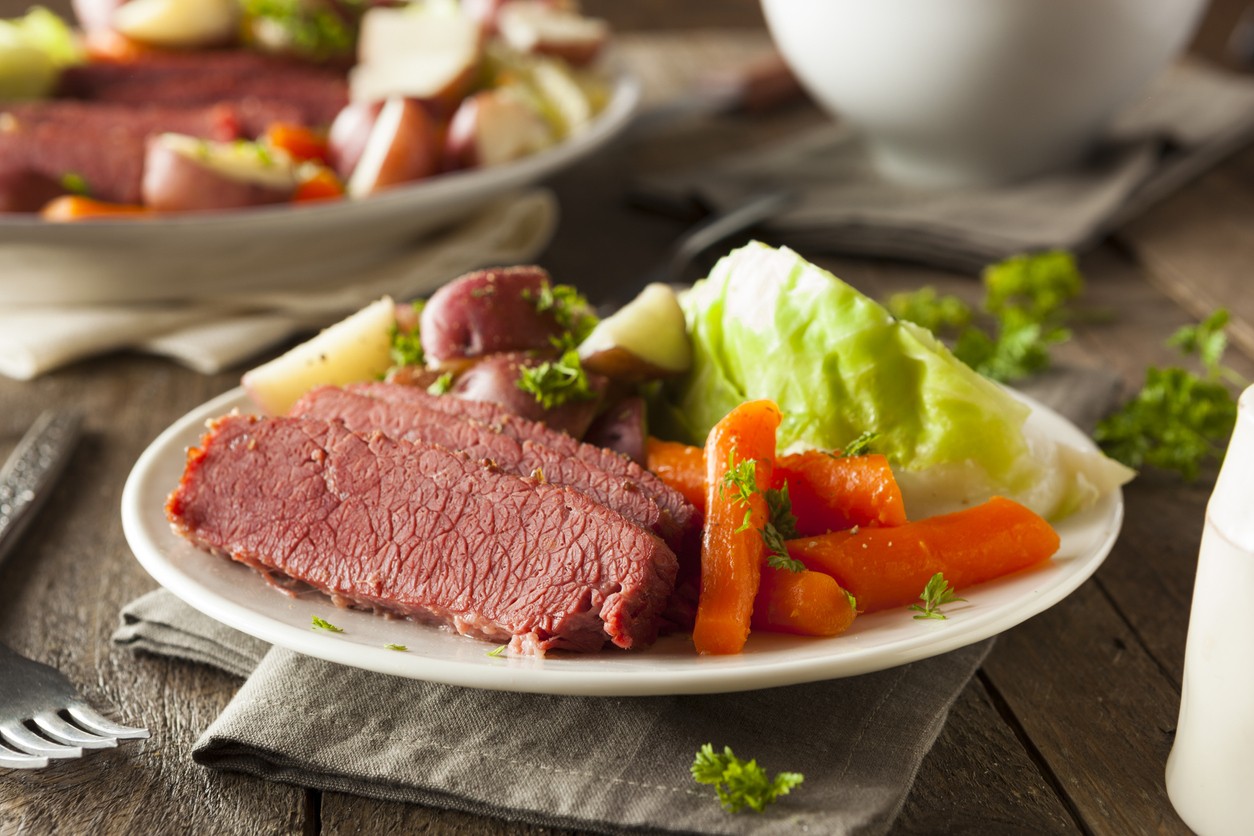You feeling lucky, punk? Because we sure are! Here at Oliver’s, St. Patrick’s Day is all about celebrating Irish heritage with your closest friends and family, and nothing hits the spot quite like a shared meal of delicious corned beef. Corned beef is typically a brisket that is cured with a dry rub or seasoned in brine; it’s then boiled or roasted over low heat for hours, producing a succulent, flavorful piece of meat that goes beautifully with cabbage and potatoes. Corned beef has been a tradition in Ireland since the 1600’s, but the version we know and love today really has its roots in New York of the late 1800’s. In fact, the corned beef dinner we tend to think of as being traditional St. Patrick’s Day-fare is about as Irish as spaghetti and meatballs are Italian!
Beef itself is actually a relatively new addition to the Irish diet in general, having not been popularly available before the mid-1500’s. Until this point, cattle had been considered too valuable to kill, due the necessity of their labor in farming as well as their production of milk for cheese and cream. Cows were only killed if they were no longer capable of working, and even then, beef was generally reserved for the wealthiest people in town. It wasn’t until the beef-crazy English colonized Ireland that beef began to become a commercial product of Ireland, with the English importing hundreds of heads of cattle every year; ironically, though the demand for Irish beef became a global phenomenon, it was still too expensive for the average Irish citizen to purchase and they continued to subsist on mostly potatoes and pork. Due to a lack of refrigeration, most meats were cured with salt to preserve them over long periods of time. These cured sides of beef began to be known as “corned” beef, in reference to the size of the salt crystals which were used in the curing process – about the size of a corn kernel. This corned beef would have been made from a variety of cuts, and thanks to the amount of salt used to cure it, often tasted less of beef and more of salt.
The corned beef dinner we’re familiar with actually doesn’t pop up until the late 1800’s in New York City. At this time, there was a massive wave of immigrants from Ireland to the United States; much of this was directly or indirectly caused by the Potato Blight of 1845, which lead to a massive wave of famine and poverty in Ireland. Unfortunately, these immigrants faced a great deal of prejudice from the established American populations, so they tended to settle in densely packed communities in cities. In New York, Irish communities existed alongside Jewish communities, and as most Irish-American New Yorkers were able to make more money than they had in Ireland, they began purchasing beef from Kosher butchers. Jewish Americans had brought their own corned beef tradition from Central and Eastern Europe, a brisket tenderized with salt and spices and boiled to succulent perfection with cabbage. As Irish and Jewish-American communities began to coexist, the two traditions became intertwined, and voila: the tradition of corned beef and cabbage on St. Patrick’s Day was born!
So you see, while corned beef as we know it may not be as traditionally Irish as we thought, it IS a quintessential part of the Irish-American experience. Celebrate your Irish heritage or the Irish heritage of those you love this St. Patrick’s Day with Oliver’s – we’ve got the products you want at the prices you need to make your party pop. You won’t need a leprechaun with a pot of gold to make your guests green with envy!
For an easy, homemade corned beef dinner, check out our corned beef recipe HERE, or for a day-after meal that’ll have you feeling lucky, check out our guide to re-purposing St. Patrick’s Day leftovers HERE.


No comments yet. Add the first comment